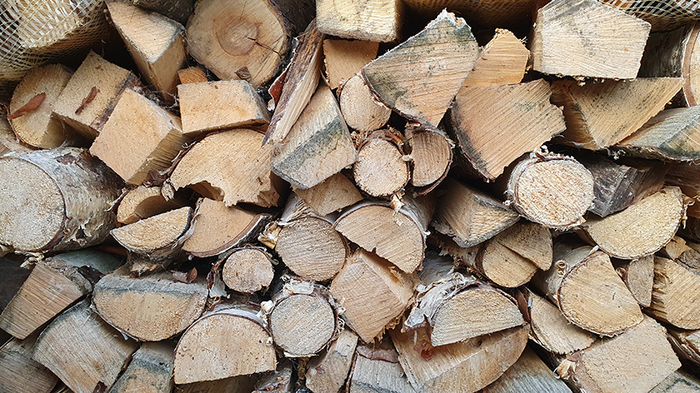Water and wood could one day be all that is required to power a household. Scientists in Sweden have developed a method to produce electricity from these two renewable resources at a time when energy is a crucial issue for people globally.

In nature when wood dries out from being soaked, it gives off an electrical charge. Researchers at KTH in Sweden showed that if the wood’s composition is nanoengineered the right way, the phenomenon can be turned into a power source. Image Credit: David Callahan/KTH Royal Institute of Technology
The method described in the scientific journal Advanced Functional Materials by KTH Royal Institute of Technology researchers concentrates on what transpires naturally after wood is immersed in water and the water evaporates. Transpiration, the movement of water through a plant, occurs continuously in nature. It also generates small amounts of power, which is known as bioelectricity.
According to Yuanyuan Li, assistant professor at KTH’s Division of Biocomposites, small but significant amounts of electricity may now be harvested using wood nanoengineering and pH tuning.
At the moment we can run small devices such as an LED lamp or a calculator. If we wanted to power a laptop, we would need about one square meter of wood about one centimeter thick, and about 2 liters of water. For a normal household we’d need far more material and water than that, so more research is needed.
Yuanyuan Li, Assistant Professor, Division of Biocomposites, KTH Royal Institute of Technology
The investigators enhanced the surface area, porosity (or density), surface charge, how easily water can travel through the material, and the water solution itself by changing the nanoscale composition of wood—all of which are characteristics that influence electricity generation in wood.
We compared the porous structure in regular wood with the material we improved with regard to surface, porosity, surface charge and water transportation. Our measurements showed electricity generation that’s 10 times higher than with natural wood.
Yuanyuan Li, Assistant Professor, Division of Biocomposites, KTH Royal Institute of Technology
She claims that by fine-tuning the pH difference between wood and water as a result of an ion concentration gradient, a potential of up to 1 volt and a power output of 1.35 microwatts per square centimeter can be reached.
According to Li, the wood can currently deliver high voltage for roughly 2–3 hours before fading. Li claims that the wood has survived 10 cycles with water with no degradation in performance.
The great advantage of this technology is that the wood can readily be used for other purposes once it’s depleted as an energy source, such as transparent paper, wood-based foam and different biocomposites.
Yuanyuan Li, Assistant Professor, Division of Biocomposites, KTH Royal Institute of Technology
Journal Reference
Garemark, J., et al. (2022) Advancing Hydrovoltaic Energy Harvesting from Wood through Cell Wall Nanoengineering. Advanced Functional Materials. doi.org/10.1002/adfm.202208933.